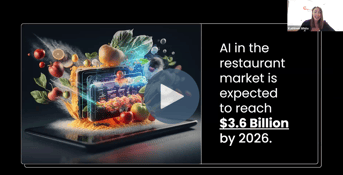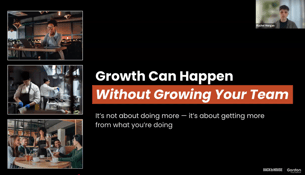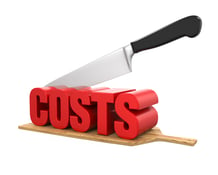The sheer number of costs you have to track as a restaurant operator can boggle the mind. A few of those will be steady expenses — your rent and utilities probably aren’t going to change much from week to week. Others are going to be volatile. Tracking those moving costs in real time can mean the difference between making or losing money, so it’s crucial to have a relatively simple indicator to help you see the larger picture.
One standard measure that restaurant operators have come to rely on is what’s called restaurant prime cost, or RPC. Establishments that serve only drinks keep a similar measure and call it pour cost. Either way you describe it, the number summarizes the costs of food, drink, and labor that go into what you serve your customers.
RPC is among the most important indicators of a profitable menu and overall healthy finances. Knowing and tracking your restaurant prime cost will help you evaluate your menu, manage your inventory, and optimally schedule your staff. Want to know how well your menu and staff are performing over a given period? Calculate your RPC on the regular, and you’ll always have a sense of where your operation stands.
Here’s how to make that happen.
How to calculate RPC and the RPC Ratio
Restaurant Prime Cost is useful because it excludes costs you don’t have a great deal of short-term control over. Overhead costs such as utilities, rent, front or back of house supplies, repairs, furniture, and outside cleaning or laundry services aren’t part of your prime cost. So set those aside.
We are strictly considering the direct costs associated with food, drink, and staffing. Those costs include payroll, payroll taxes, any other benefits paid to your employees, and your costs of goods sold, or CoGS, for a given period.
To calculate CoGS, add your beginning inventory costs and purchases for the respective period and subtract the costs of your remaining, unused inventory. The most efficient way to set this up for the long run is to have your suppliers break out food and drink from, say, paper towels and hand soap. For most restaurants, the cost of your goods sold will amount to about a third of overall expenses.
CoGS for the period = [cost of beginning inventory] + [purchases for the period] – [ending inventory]
For payroll expenses, your POS should be able to provide a report, or you may need to connect with your accountant for a detailed overview of payroll, insurance, and payroll taxes. In any event, it’s a good idea to get a breakdown of your payroll. This, too, for most restaurants, will shake out to about a third of your total costs.
To calculate your RPC, just add those two big numbers:
cost of goods sold + total labor cost = restaurant prime cost
Once you have your RPC, figure out how much of a bite it represents from your total sales revenue. That portion is known as your prime cost percentage.
The prime cost percentage formula is pretty intuitive. To figure out what proportion your prime cost represents, divide it by your total sales and then multiply by 100 to get a percentage. For instance, if in a given week you did $8,800 in sales and had a prime cost of $5,500, you’d use the formula …
prime cost / total sales x 100 = prime cost percentage
… to get 5,500 / 8,800 x 100 = 62.25%
That figure will probably vary from week to week, as sales fluctuate, as your staff call in sick or quit, as your suppliers change the price of fresh lettuce and butter. But factoring together those variables to arrive at a figure you can compare across weeks will help you nip any problems in the bud, before they wind up draining you.
A good rule of thumb, for a profitable restaurant, is to maintain a prime cost percentage between 55% and 65%. Higher-ticket establishments, where service and ingredients cost more, might carry a prime cost percentage toward the higher end; a bar or a fast casual restaurant might need to stay closer to the low end of that range. The key for any establishment is to keep the number consistent — within just a couple of points, ideally.
How does a restaurant’s profit and loss differ from RPC?
People might use RPC and P&L interchangeably. They’re similar, but not identical. Profit and loss includes all of those other expenses that we set aside to create the RPC. Marketing costs, the utilities and rent, the building's insurance, the depreciating value of your appliances over the life of their use — these all go into the cost column of a P&L statement, along with the costs of goods sold and your labor costs.
Comparing that full sum of costs against your total sales gives you, hopefully, a positive difference that you know as profit. Ultimately you’re going to want to have a handle on both your RPC and your P&L. To inform short-term decision-making, RPC may prove to be the simpler tool.
Why should you keep track of your Restaurant Prime Cost?
The most obvious reason to track your RPC is to make sure you’re making money. If you can maintain a ratio in the sweet spot for profitability and market competitiveness, you can be fairly certain that you’re running a healthy business.
Your RPC comprises the largest portion of your expenses, so tracking those can help you control your overall costs. If prices for ingredients go up on your most popular menu items, it may be a good time to broaden your vendor relationships. If market prices go up across the board, maybe it's a good time to shift to a more seasonal menu that allows for more price-accessible ingredients, or to trim items from your menu altogether. Maybe you hit the slow season and need to cut staff schedules, or you lose some of your best staff and need to hire and train. Maybe you need to tighten up your food waste practices. While these are all dynamic factors, you can address them so long as you take the time to measure and track them.
The RPC folds all of these questions into a number that can help you judge which changes, if any, you need to make. A low-to-normal RPC may assure you that the bump in prices for red snapper or flank steak aren’t hitting your bottom line as much as you’d worried. A high RPC is like a high cholesterol reading — it doesn’t tell you everything about your health, but if you see it trending upward, you can take actions to lower it. You might, for instance, make hard choices about whether you can afford to keep a loss leader on the menu. Decisions around portion size, menu prices, and staffing levels all might grow out of a consistently higher-than-usual RPC. By contrast, if you’re comfortably in the lower bound of your RPC, you might decide to take more chances with the menu or to add another server in the face of higher customer volume, confident that you can absorb the labor cost.
Knowing your restaurant prime cost isn’t going to make every decision for you. But so long as you monitor it consistently and accurately, it should give you a snapshot of the overall financial health of your month-to-month or week-to-week operations. You’ll know what you can afford, what you can’t afford, and how urgently you need to make tweaks. It also provides a simple, straightforward metric that lets you communicate to your fellow managers that they, individually, may need to come up with solutions as well.
[Photo by Clem Onojeghuo on Unsplash]





